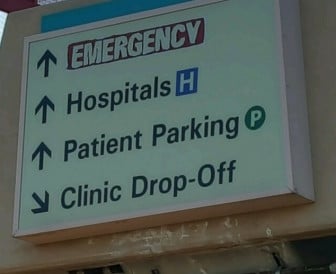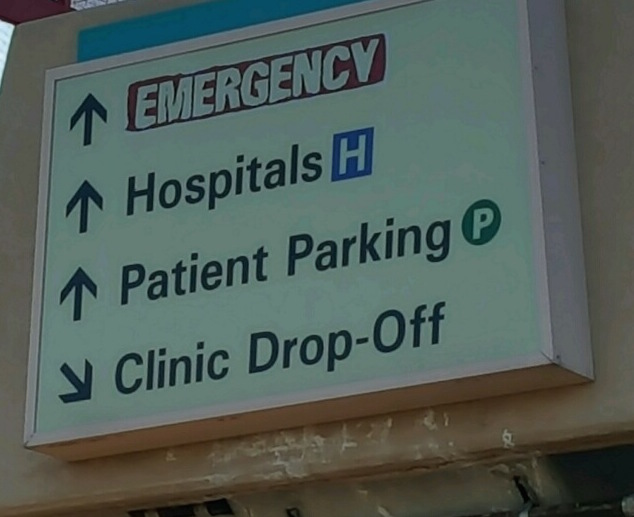 A former University of New Mexico regent publicly accused Gov. Susana Martinez’s administration Friday of politically interfering to block the development of a new facility to replace the university’s ’outmoded’ hospital.
A former University of New Mexico regent publicly accused Gov. Susana Martinez’s administration Friday of politically interfering to block the development of a new facility to replace the university’s ’outmoded’ hospital.
Mel Eaves leveled his accusations during a public meeting of the Health Sciences Center Board of Directors in which staff ticked off the challenges to working in an older facility, some portions of which were built in the 1950s.
Friday’s meeting comes roughly a month and a half after the Director & CEO of the University of New Mexico’s Comprehensive Cancer Center made a passionate, almost desperate, argument to UNM regents and HSC board of directors to support the new facility.
In a letter obtained by New Mexico In Depth, Dr. Cheryl Willman described one northern New Mexico family’s heartbreaking story of a family matriarch who couldn’t receive care days before Christmas because the hospital was full.
“I have heard all of the arguments for why approval of the critical UNM replacement hospital project has stalled,” Willman wrote in her letter. “None of them are justifiable.”
Willman goes on in her letter to dispute the idea that a “replacement hospital would amount to “unfair” competition with community or private health systems and physicians.
“Those of us on the front lines of health care delivery in New Mexico know this argument is simply ridiculous,” Willman wrote. “This issue is not about politics. When you are desperately ill, it doesn’t matter. The UNM replacement hospital is about assuring the life, safety, and well-being of New Mexicans. We have to speak out.”
Hospital staff on Friday appeared to corroborate Willman’s observations.
One UNM health system official told the panel the hospital turned away more than 800 patients in 2015 due to a lack of available beds, a number likely to rise to 900 in 2016 if the current trend continues.
And earlier this week, Dr. Mauricio Tohen told the panel, the heat stopped in one of the hospital’s units, forcing staff to move several older patients.
“We had 12 patients and we were able to re-locate in the general psychiatric unit,” Tohen said later outside the meeting. “Fortunately we have another unit at the Sandoval Regional Medical Center. If more admissions are needed, we have that option.”
Too-small operating rooms and patients who wait, sometimes days, for beds were other complaints staff communicated to the HSC Board of Directors.
It was against these poor working conditions at UNMH that Eaves leveled his accusations “of political intervening” by the Martinez administration.
In particular, Eaves cited a 2011 decision by the Board of Finance, which is controlled by the governor, to not support a plan to build a new 96-bed hospital. He also alluded to continued “political interference,” citing the removal of UNM regents Suzanne Quillen and Brad Hosmer from the HSC Board of Directors in April 2015.
“I, for one, have no hesitation in calling a spade a spade,” Eaves said. “It’s shocking. I think those who have delayed this hospital should be ashamed of themselves.”
A spokesman for the governor disputed Eaves’ accusations in an e-mail Friday evening.
“A project costing hundreds of millions of taxpayer dollars deserves scrutiny and due diligence. No one should expect a project that could cost upwards of half a billion dollars to be rubber-stamped,” Michael Lonergan wrote NMID.
Eaves publicly accused UNM regent Jack Fortner of taking directions from the governor’s office to remove Quillen and Hosmer.
Fortner called Eaves’ accusations ‘silly’ and said he took Quillen off the board of directors because regents should alternate on different committees and Quillen had only served on the regents’ Health Science Center committee.
He added, “I wanted to be back on the Health Science” committee because he had enjoyed his time on it when he was a member years ago.
“Someone had to be off,” Fortner said.
Fortner’s decision to remove Quillen and Hosmer came a week after the Albuquerque Journal published a story about the hospital’s troubles, including the lack of beds and difficulty in taking in patients transferred from elsewhere because it is New Mexico’s only Level One trauma hospital.
Quillen, who is an administrator of medical facilities in southern New Mexico, was quoted in the story as saying ‘her facility in Las Cruces, out of necessity, now transfers more patients to hospitals in El Paso, Texas, than it does to UNMH and has even begun sending people to Arizona.’
“We cannot get patients here … it’s always Code Purple,” she said in the Journal story.
‘Code Purple’ means patients cannot transfer into the hospital.
A week after the Journal story, Quillen said she received an email from Fortner telling her he was removing her from the Board of Directors.
Quillen said Fortner gave no reason for her removal.
Eaves said he believes both Quillen and Hosmer were removed because of their support for the development of a new facility
Hosmer said he could only speculate as to why Fortner took him off the HSC Board of Directors, but said he believed it was because of his support of a new facility.
“There’s clearly a resistance to it – a newspaper article triggered a reaction,” Hosmer said. “The kind of questions and discussions that we see from Santa Fe – and I use that term vaguely because that’s all I know– are skeptical, hostile, resistant, which I find puzzling. Because I would think from the perspective of a political administration moving this project forward would be all plus.”
Quillen did not venture to say why she was removed, but she talked of coming to the overwhelming conclusion of the necessity for a new medical facility to meet the overwhelming needs.
She became convinced, she said, after spending a year and a half “validating the numbers,” “meeting with a lot of nurses, a lot of physicians” at UNMH, and asking for daily count of patients.
In Willman’s letter, the Cancer Center CEO told the university regents and HSC board of directors of how the Questa woman — who was the mother of one of her staff members –had suffered a ‘bilateral pulmonary emboli’. And her doctors sought to transfer the woman “to UNM Hospital, only to find out that our Emergency Department was on “Code Purple” status, with no availability.”
The UNMH emergency room “had 52 patients waiting in the hallways to be roomed in the ER, many of whom were critically ill,” Willman wrote. “The beds in the hospital and the intensive care units were similarly completely full.”
“Unfortunately, at 9:00 p.m., she died,” Willman continued. “So this Christmas, instead of convening at their beloved family home in Questa to make enchiladas, tamales, and posole, (the woman’s) family will come together in grief for her funeral.”

Would someone please explain what the Martinez administration is trying to accomplish in any–I say again: any–area. Under her leadership, the state has made no improvements in its economy, education, environment, or healthcare system; and the government–executive branch and legislature–remains as incompetent, ineffective, and corrupt as before. So far as I can tell, it sold the jet which Richardson bought, and that’s it.
One thing that isn’t mentioned is the amount of doctors leaving UNMH over the poor facilities and equipment. Send a public records request and find out how many physicians have left UNMH in the last two years and you will see firsthand that the hospital is at all time low.
interesting since Mel Eaves is a big financial supporter of Martinez.